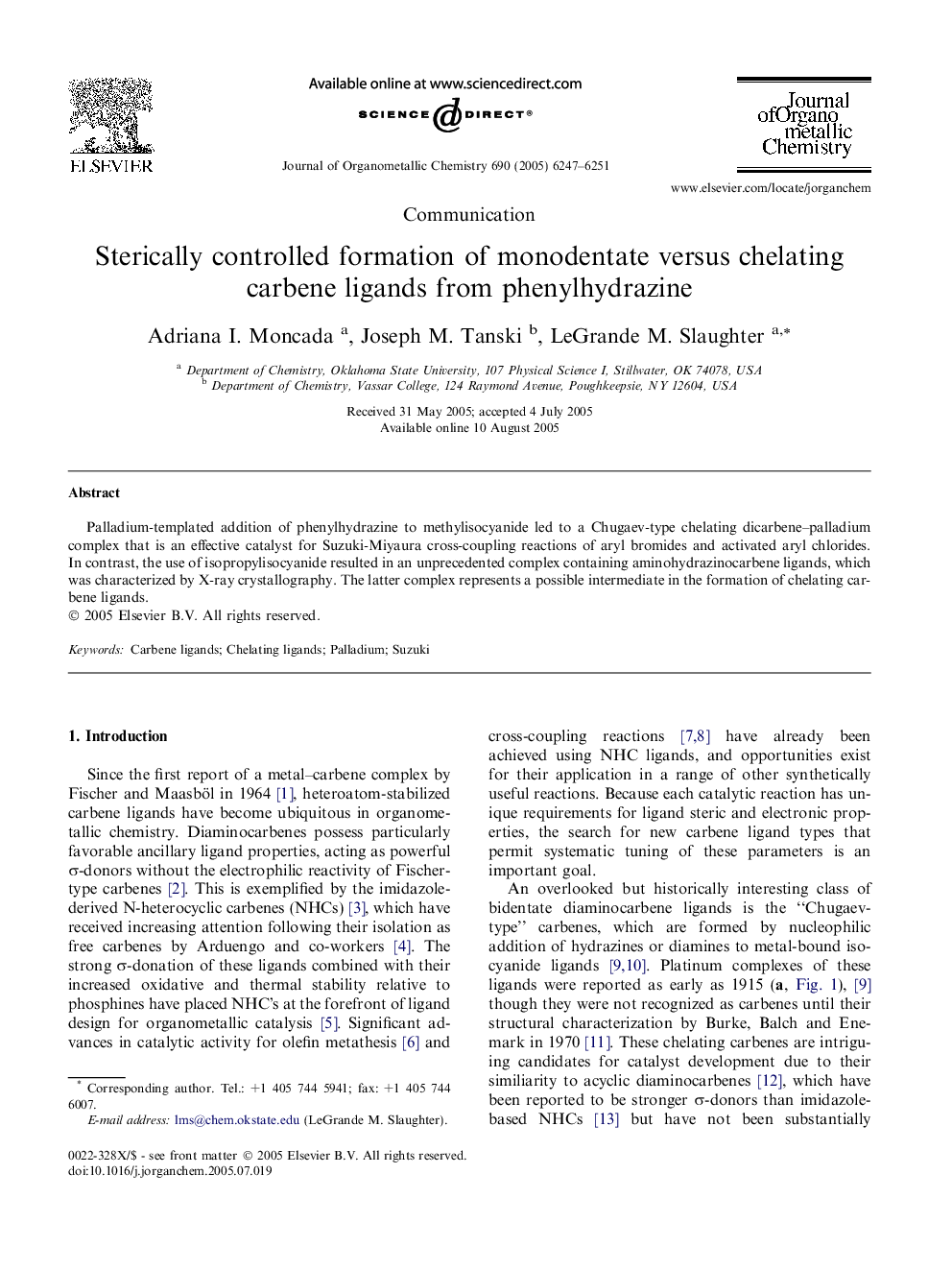| Article ID | Journal | Published Year | Pages | File Type |
|---|---|---|---|---|
| 1326140 | Journal of Organometallic Chemistry | 2005 | 5 Pages |
Palladium-templated addition of phenylhydrazine to methylisocyanide led to a Chugaev-type chelating dicarbene–palladium complex that is an effective catalyst for Suzuki-Miyaura cross-coupling reactions of aryl bromides and activated aryl chlorides. In contrast, the use of isopropylisocyanide resulted in an unprecedented complex containing aminohydrazinocarbene ligands, which was characterized by X-ray crystallography. The latter complex represents a possible intermediate in the formation of chelating carbene ligands.
Graphical abstractThe addition of phenylhydrazine to [Pd(CNR)4]2+ results in a chelating dicarbene ligand in the case of methylisocyanide, whereas the use of isopropylisocyanide affords an unprecedented complex with monodentate aminohydrazinocarbene ligands that represent intermediates in chelating dicarbene ligand formation.Figure optionsDownload full-size imageDownload as PowerPoint slide
